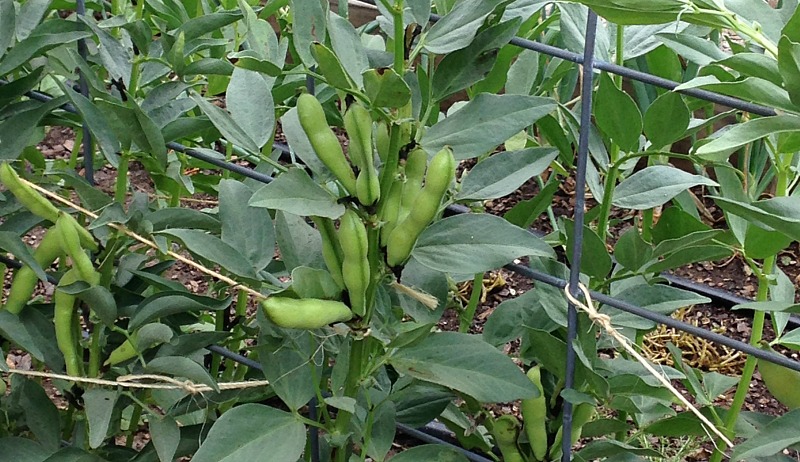
If you don’t grow fava beans (Vivia faba) yet, make this the year you give them a try. Also known as broad beans, favas are deserving of a place in your garden. They’re delicious, versatile, and very easy to grow.
A Nitrogen Fixer
Fava beans aren’t actually a bean; they’re more closely related to the vetches. But, like other members of the Fabaceae family, fava beans have the unique ability to fix their own nitrogen, pulling it from the air and converting it to a form usable for plant growth via a symbiotic relationship with soil bacteria. For many farmers, this means they grow fava beans primarily as a soil-feeding cover crop, but favas also make an exceptional edible crop. Their nutty flavor and smooth texture has been enjoyed by humans for centuries.
Plant Them Right
Favas favor cool weather, performing their best when air temperatures are between 60 and 75 degrees F. Because most varieties require between 80 and 110 days to reach maturity, this means that to grow fava beans in areas with warm summers (such as in my Pennsylvania garden), seeds should be planted in the very early spring, as soon as the soil can be worked. I plant my fava seeds the same day I plant my peas. Where summers are downright hot, in the southern U.S. for example, fava seeds are best planted in the fall, for winter harvest. However, in northern areas, favas can be planted anytime through early spring.
Extremely cold-tolerant, fava plants survive temperatures down into the teens. But, their heat tolerance is limited; the plants won’t set any pods in hot weather.
Seeds are sown 1 to 2 inches deep and 6 to 8 inches apart. Fava plants grow quite large, reaching between 2 and 5 feet tall, depending on the variety, so give them plenty of room.
As the plants grow, you can snip off some of the edible leaves and toss them into salads and sandwiches. The white and dark purple, fragrant flowers are edible, too. Both boast a mild, nutty flavor.
When the plants reach maturity, they come into flower. The blooms are borne tight against the stems and from them the pods develop over the course of several weeks. Depending on the variety, the pods can grow five to nine inches long.
Harvesting & Storing Fava Beans
The beans encased inside the pods can grow to the size of a quarter, if allowed to fully develop. For the freshest, most succulent flavor, harvest the pods when the beans are sill immature and the pods themselves are still pliable. To remove the beans from the pod, snap off the blossom end and peel the string down to “unzip” the pod and open it. Remove the beans by running your thumb up the inside of the pod.
If you wait too long to harvest the pods, the beans form a thick seed coat that’s tough and difficult to eat. If you don’t harvest the beans in time and the seed coat ends up being thick and rubbery, blanch the beans in boiling water for one minute before putting them into an ice water bath. After this treatment, the seed coats will slip right off the beans.
Fava beans can also be harvested and stored as a dried bean. To harvest dried favas, simply allow the pods to dry on the plants. When the dried pods start cracking open, pull the plants and pick off the dried pods. Lay the harvested pods on a piece of newspaper in a warm, dry room and allow them to continue drying for a few weeks. Once the pods have naturally dried and cracked open, remove the beans inside by hand. Toss the pods onto the compost pile and put the beans back on the newspaper to continue to dry for a few more weeks. Store the dried beans in airtight glass jars or plastic containers in a dark cupboard.
Choose Your Variety
There are many different varieties of fava beans. Great short-season varieties include Express, Loretta and Broad Windsor. Long-season selections include Masterpiece, Aprovecho and Aquadulce.
Give favas a try in your garden this year and enjoy both their beautiful plants and their delicious flavor.




